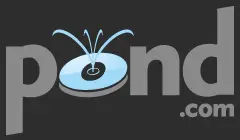A koi pond is one of the most popular types of garden installations worldwide. These colorful fish are fascinating to watch and quite famously have a distinctive personality. As they become use to humans, they can be very curious, allowing themselves to be touched at the surface of the water and providing a beautiful visual display of color and shape when they feed. These are very sensitive fish, however, and they do require that their owner keep an eye on them for signs of illness and that their environment be maintained so that they're ensured a safe and clean place to live.
The number one enemy of koi is dirty water. To that end, there are several different products on the market which function to keep the water clean. Mechanical filters, of course, are among the most popular and effective ways to keep a koi fish pond clean.

Some filters are of the skimmer variety. These circulate water by pulling it from the surface and usually by pumping it through and artificial stream or waterfall where it is deposited back into the koi pond. This keeps the water moving and aerates the water, providing a healthy environment for the koi fish. Other filters are located below the water. In either case, these devices will need to be cleaned according to the manufacturer's schedule. Cleaning them is generally not terribly difficult and doing so regularly will ensure that one's koi have a clean place to call home.
Debris which blows into the water can pollute koi ponds to dangerous levels for the koi, as well. One can remove this by simply using a net to catch debris that floats on the surface but, for that debris which collects at the base of the fish pond, more sophisticated measures are required. There are several different types of vacuums on the market built expressly for this purpose. These vacuums allow the owner to scour the bottom of the pond and to remove debris and fish waste which inevitably builds up over time.
Algae will also be a threat. This single-celled type of plant quickly becomes a nuisance, growing into huge colonies of what is commonly known as "pond scum". There are several ways to deal with this problem. Where koi are concerned, a chemical algae inhibitor is generally preferred. In goldfish ponds many people plant barley straw. This plant consumes the resources that algae need to grow making the water inhospitable to algae. However, koi rather like to munch on plants and, curious creatures that they are, they tend to enjoy digging up plants that they do not eat. For this reason, most owners prefer to use one of the many chemical products on the market to keep pond algae at bay.
At the same time that one is trying to keep their pond free of unwanted plants, they may well be encouraging their growth without knowing it. The most beautiful koi ponds usually have a raised edge. There is a reason behind this. Fertilizer is among the most ubiquitous of pollutants found in our environment. While fertilizer is a great thing to have in the right places, it's precisely the worst thing to have in the water in which the koi live. It pollutes the water, presents a chemical hazard to the fish and, of course, promotes the growth of plants, including algae.
In some climates, due to low winter temperatures, it may be necessary to remove the pond koi during the winter months. However, in most climates the cold months of the year only necessitate a bit of planning ahead where the design of the koi fish pond is concerned. They should be at least 3 feet deep, preferably deeper, at its deepest point to accommodate the fish. In colder climates, the deeper the pond the lesser the likelihood that it will freeze solid in the winter. In climate zone 5 or colder it should ideally be around four feet deep. Remember that the water will freeze to a certain depth no matter how deep it is and the more depth is available the more room the koi will have to move about.

Properly constructed ponds will always have a pond liner at the bottom which will prevent the water from leeching out into the Earth. Water will, however, evaporate into the atmosphere and this is unavoidable. Make certain to replenish the water from time to time. If one happens to be on a municipal water system, it will mean that they're water is chlorinated. There are various chemicals available on the market which will remove this chlorine from the water and make it more hospitable to the fish. These are a necessary part of maintenance.
Like all animals, koi fish produce waste. When this waste builds up, it can become toxic. While using one of the aforementioned vacuum devices can effectively clean the bottom of the pond, there is a threshold where too many koi fish will produce too much waste and their water will become a hazard to the fish. Most experts recommend that no more than one koi be placed into a pond for every 500 gallons of water. This ensures that the waste does not build up too quickly and that the water remains clean enough to maintain the fish's health.
Koi will exhibit some tell-tale signs when they become ill. One of the signs to watch for is fish who constantly rub themselves against the edge of the pond. This is a sign that they have a bacterial infection on their bodies and, left unchecked, these types of infections can prove fatal. There are agents which can be added to the water which kill off harmful bacteria and these are a necessary part of the maintenance. Provided one keeps their koi pond water clean and fresh, these fish can live many happy years and provide hours of entertainment.


